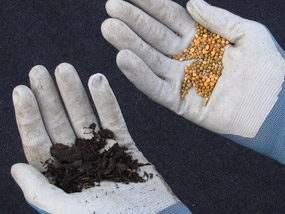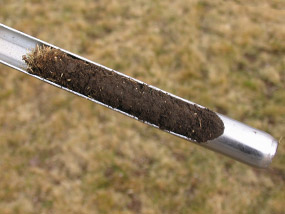Plant Health Care
|
We build, review and audit the maintenance programs for plants young and old. We provide you with the information you require to make proper decisions. Our work is based on many years of practical experience combined with technical information gathered at industry meetings and scientific conferences. |
||
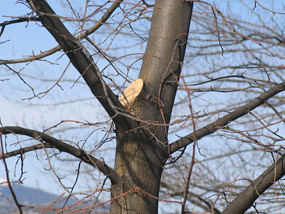
PruningYoung trees require structural pruning. The work should address defaults which are easy to correct at this time, such as large side branches, double leaders or included bark. If left unmanaged, these defects become a liability when the tree is older.
Mature trees should require little pruning, except clearance for traffic, crown cleaning of diseased or dead wood, or crown reduction for trees in decline. |

Root Management at Time of PlantingProper planting of trees and shrubs requires attention to the root system. Ahead of the planting, the root ball should be examined and defects should be corrected. This includes roots that must be removed, such as circling roots, kinked roots and adventitious roots. The knowledge is based on very recent research done across North America with field grown, container grown and ball-and-burlap trees. |
Fertilization ProgramsYoung plants need fertilization to ensure adequate growth and rapid establishment. Later on nutrients should be applied to correct deficiencies or documented soil problems. We have many years of experience designing fertilization programs for many situations, either urban or agriculture. We can collect soil and tissue samples, provide interpretation of laboratory results, and prescribe the corrective actions. |
|
Soil ManagementHealthy plants start with healthy soils! It is now well documented in the scientific literature: the quality of the soil in the root zone has an impact on plant health and the ability of the plant to resist leaf diseases. Compost amendments will improve soil structure and soil biological activities. We can offer technical advice and practical recipes to improve the soil around your plants, either before planting or after establishment. |
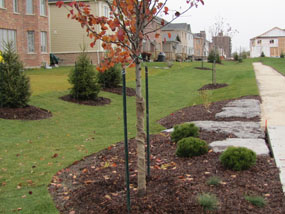
Planting PracticesThings you do at the time of planting will have a big impact for many years. A sound program will include all practices that make a difference – preparation of the planting hole, amending the planting soil, applying mulch, and adequate watering after planting. Our technical knowledge is based on the most up-to-date scientific information on the best methods to use. |
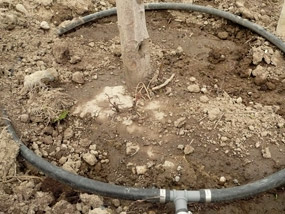
Water ManagementAdequate watering is the most critical aspect of post-plating care. The first year after planting ensure the new plants are watered properly, not too much or too little. The goal is to promote root development outside the original root ball and into the new soil. Once the plant is established, manage the soil to ensure adequate water retention and water conservation.
|
For more information on this topic, including technical publications prepared by our company and available for download, please visit Technical Information.

